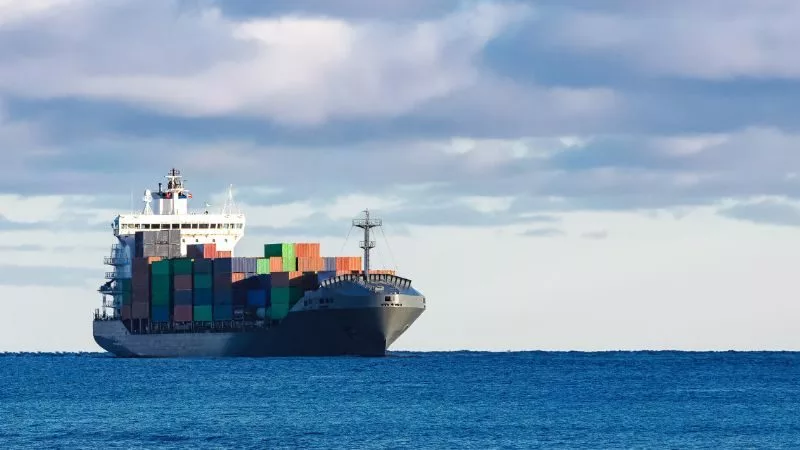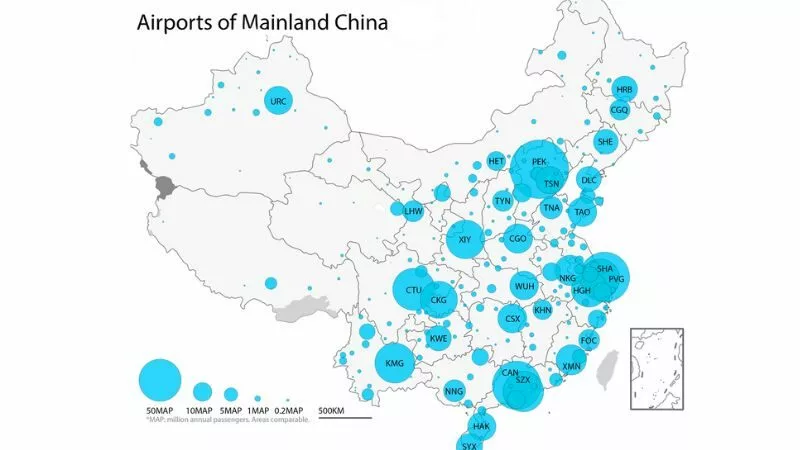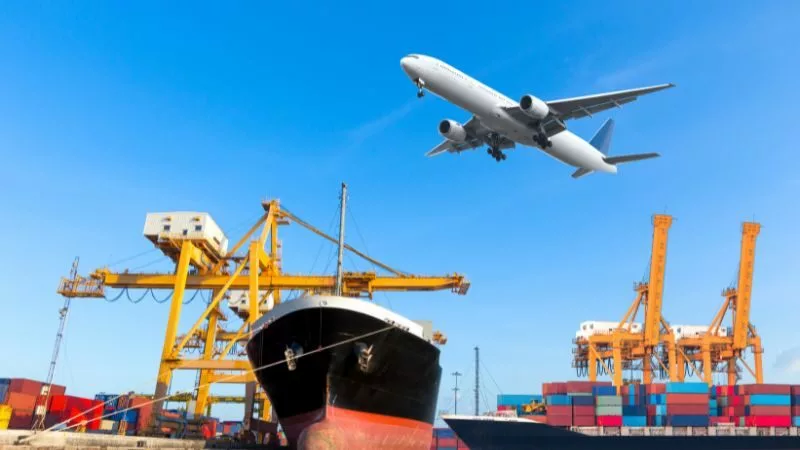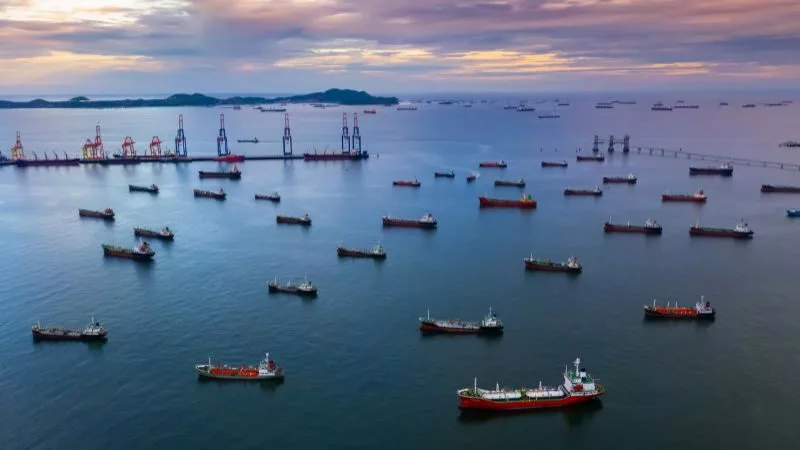
With the growth of global trade, shipping products from China to the United States has become extremely common. However, businesses need to pay close attention to the latest regulations and geopolitical developments that can impact international transportation and logistics.
In recent years, trade tensions between China and the US have escalated, leading to increased tariffs and more scrutiny on Chinese imports. The governments of both countries have introduced various policies aimed at restricting trade and protecting domestic industries. These political actions can directly raise shipping costs or cause delays at customs.
Additionally, the COVID-19 pandemic led to great disruption in manufacturing and shipping from China. Port congestion, labor shortages, and reduced air freight capacity increased delays and expenses for China-US supply chains. While production in China has recovered, volatility still remains.
For e-commerce companies and other importers, having an effective shipping strategy from China to the US is crucial but also challenging given the complex regulatory and political environment. Working with a knowledgeable freight forwarder can help navigate issues like customs clearance, tariffs, and adapting to new transportation regulations and give you the best shipping service from China to US with the cheapest price.
This article will explore the various aspects involved in shipping from China to the USA, including common shipping methods, costs, customs procedures and other important considerations.
Shipping Options
When you’re considering shipping goods, you have a variety of options to choose from, each with its own benefits based on your budget, cargo type, and urgency. Let’s explore the most common way to ship from China to the US to see which is available to you.
The Sea Freight: FCL and LCL

Sea freight is the long-distance transportation of cargo by ship. As ocean-going vessels can carry large volumes of goods, sea freight is well-suited for transporting bulkier or heavier cargo in containers or as break bulk over long distances.
There are two ways of sea freight: FCL and LCL.
Full Container Load (FCL) offers you an exclusive container for your goods, an optimal choice when you have enough cargo to fill an entire container.
Less Than Container Load (LCL) is ideal when your cargo is not sufficient to fill a container; here, you share the container space with other shippers, which can be more economical for smaller shipments.
Air Freight: Cargo and Express
For faster delivery, Air Freight is available in two key forms: Cargo and Express shipping.
Standard Air Cargo services are generally more affordable and suitable for larger shipments that don’t require the speed of express services. On the other hand, Express Freight provides a swift solution for urgent or time-sensitive shipments, though it typically comes at a higher cost.
Courier Services
If you’re shipping small parcels or documents, Courier Services is a convenient option. We can offer door to door delivery with tracking and are typically faster than ocean freight. Courier services are known for their reliability and speed, making them a frequently chosen method for small-scale shipping needs.
Specialized Freight Services
For shipments requiring special handling or conditions, Specialized Freight Services are your go-to. Whether you need refrigerated containers for perishable items or have oversized equipment that needs extra attention, there are freight services tailored to your unique requirements. With these services, extra care is taken to ensure your goods arrive safely and in compliance with all relevant regulations.
Main Ports in China and the US

Airports in China
| Airport | Location | Key Features |
|---|---|---|
| Beijing Capital International Airport | Beijing | The largest airport in China, a major hub for Air China |
| Shanghai Pudong International Airport | Shanghai | Primary international gateway, major cargo hub |
| Guangzhou Baiyun International Airport | Guangzhou | Major hub for China Southern Airlines |
| Chengdu Shuangliu International Airport | Chengdu | Hub for Sichuan Airlines and Air China, expanding routes |
| Shenzhen Bao’an International Airport | Shenzhen | Serving tech manufacturing hub, growing passenger traffic |
| Kunming Changshui International Airport | Kunming | Gateway to China’s southwest, focus on domestic flights |
| Xi’an Xianyang International Airport | Xi’an | Serving historic city and surrounding northwest China |
| Shanghai Hongqiao International Airport | Shanghai | Main domestic airport, hub for China Eastern Airlines |
| Chongqing Jiangbei International Airport | Chongqing | Important base for West China, focus on domestic flights |
| Hangzhou Xiaoshan International Airport | Hangzhou | Fast growing airport in eastern China, an international hub |
Airports in the USA
| Airport | Location | Key Features |
|---|---|---|
| Dallas Fort Worth International Airport | Dallas | Largest airport in the US, major American Airlines hub |
| JFK International Airport | New York City | Critical transatlantic gateway on the East Coast |
| Cincinnati/Northern Kentucky International Airport | Cincinnati | Global hub for Amazon Air cargo operations |
| Los Angeles International Airport | Los Angeles | 2nd busiest US airport, major gateway on West Coast |
| Miami International Airport | Miami | Top US airport for international freight |
| Chicago O’Hare International Airport | Chicago | Major hub airport in the Midwest |
| Louisville International Airport | Louisville | WorldPort global hub for UPS |
| Ted Stevens Anchorage International Airport | Anchorage | Critical cargo hub between Asia and North America |
| Memphis International Airport | Memphis | Main FedEx global “SuperHub” location |
Seaports in China
| Seaport | Location | Key Features |
|---|---|---|
| Shenzhen | Shenzhen, Guangdong Province | One of busiest container ports globally, a major manufacturing exporter |
| Guangzhou | Guangzhou, Guangdong Province | Major port in South China, exports manufactured goods |
| Shanghai | Shanghai | Largest port in the world by cargo tonnage, major container port |
| Ningbo | Ningbo, Zhejiang Province | Major port city, exports machinery, textiles, food |
| Xiamen | Xiamen, Fujian Province | Key port for trade with South Asian Countries, exports machinery |
| Qingdao | Qingdao, Shandong Province | Northern port city, exports agricultural products, minerals |
| Tianjin | Tianjin | Primary port for Beijing, major petroleum and container hub |
Seaports in the USA
| Seaport | Location | Key Features |
|---|---|---|
| Port of Los Angeles | Los Angeles | Busiest container port in the US, major Pacific gateway |
| Port of Long Beach | Long Beach, CA | 2nd busiest US container port, Asia Pacific trade hub |
| Port of New York and New Jersey | Newark, NJ | Largest port on US East Coast, major consumer imports |
| Port of Seattle | Seattle, WA | Major West Coast container gateway, exports agriculture |
| Port of Virginia | Norfolk, VA | Deepest harbor on the US East Coast at 50 ft |
| Port of South Carolina | Charleston, SC | Top ten US container ports, exports manufacturing goods |
| Port of Houston | Houston, TX | Largest US port by foreign tonnage, oil/petrochemical hub |
Top Shipping Routes From China to the US
Ocean freight through coastal ports and air freight via inland airline hubs represent two primary ways to move goods from China to consumer markets in the US. Companies leverage China’s manufacturing strengths and US demand by optimizing logistics across these key routes.
Here are the top shipping Routes:
- Shanghai to Los Angeles
- Shenzhen to New York
- Ningbo to Los Angeles/Savannah
Shipping Time From China to the US
Delivery Time
| Port to Port (days) | Door to Door (days) | |
|---|---|---|
| Sea Freight FCL | 13-40 | 15-25 |
| Sea Freight LCL | 13-40 | 15-25 |
| Air freight | 1-5 | 7-15 |
| Express | / | 3-6 |
Factors Affecting Shipping Time between China and the US
While shipping time estimates provide a general guideline, there are various factors that can influence the actual duration of a shipment. Some regularly encountered elements that affect how long it will take to ship from China include:
- Type of Vessel: Larger container ships or bulk carriers have higher cargo capacities but slower speeds than specialized roll-on/roll-off vessels or car carriers. Ship type impacts estimated time of arrival.
- Weather Conditions: Unfavorable weather like storms can cause delays if ships need to alter course or wait out bad conditions. Seasonal weather patterns also affect certain routes.
- Port Congestion: Busy ports with high traffic or that are understaffed/inefficient may lead to longer wait times for vessels to berth, load/unload cargo which delays overall journey times.
- Route Schedule: Ships adhere to set schedules with planned stops at multiple ports. Any delays early on like missed departure can cause knock-on effects down the line.
- Cargo Inspections: Customs inspections of cargo for security, compliance or health reasons may cause delays in some ports before clearance is given.
- Seasonality: During peak seasons, rates can soar due to higher demand.
| Factor | Impact on Shipping Rates and Time |
|---|---|
| Chinese New Year | Possible extended delays before and after the holiday period. |
| Peak Season (Aug-Oct) | Higher demand can lead to port congestion and longer transit times. |
| Unforeseen Events (e.g., pandemics) | Potential for significant delays and elongated shipping times. |
Shipping Cost From China to the US

When shipping goods from China to the USA, understanding the multitude of factors that contribute to the total freight cost is crucial. Freight charges can vary considerably, and shipping rates are influenced by multiple factors including the mode of transport and the total weight or volume of your shipment.
Shipping By Sea
Shipping by the sea is the cheapest option for larger shipments. It is cheaper than air freight. If you are not in a hurry to ship your goods, choosing sea shipping is a good choice.
Cost of FCL Shipment From China to USA
| Route | Container 20’ (USD) | Container 40′ (USD) |
|---|---|---|
| Ningbo – Los Angeles | 1200 | 1300 |
| Ningbo – New York | 1800 | 2300 |
| Ningbo – Miami | 2200 | 2600 |
| Shanghai – Los Angeles | 1200 | 1500 |
| Shanghai – New York | 2000 | 2500 |
| Shanghai – Miami | 2400 | 3000 |
| Shenzhen – Los Angeles | 1350 | 1500 |
| Shenzhen – New York | 2100 | 2500 |
| Shenzhen – Miami | 2100 | 2600 |
Cost of LCL Shipment From China to the USA
| Route | USD/CBM (1-3 CBM) | USD/CBM (3-9 CBM) |
|---|---|---|
| Ningbo – Los Angeles | 30 | 40 |
| Ningbo – New York | 50 | 75 |
| Ningbo – Miami | 70 | 95 |
| Shanghai – Los Angeles | 30 | 40 |
| Shanghai – New York | 50 | 75 |
| Shanghai – Miami | 70 | 90 |
| Shenzhen – Los Angeles | 30 | 40 |
| Shenzhen – New York | 35 | 45 |
| Shenzhen – Miami | 40 | 45 |
Shipping By Air
100KGS – 299KGS Air freight Shipping Costs from China to the USA
| Route | Price Per KG ($USD) | Estimated Transit time (days) |
|---|---|---|
| Shanghai – Los Angeles (LAX) | 4.0 | 1 |
| Shanghai – New York (JFK) | 4.5 | 1 |
| Shanghai – Miami (MIA) | 5.6 | 6 |
| Shanghai – Chicago (ORD) | 4.6 | 1 |
| Guangzhou – Los Angeles (LAX) | 4.6 | 1 |
| Guangzhou – New York (JFK) | 4.9 | 4 |
| Guangzhou – Miami (MIA) | 5.5 | 5 |
| Guangzhou – Chicago (ORD) | 4.9 | 4 |
300KGS – 1000KGS Air freight Shipping Costs from China to the USA
| Route | Price Per KG ($USD) | Estimated Transit time (days) |
|---|---|---|
| Shanghai – Los Angeles (LAX) | 4.0 | 1 |
| Shanghai – New York (JFK) | 4.5 | 1 |
| Shanghai – Miami (MIA) | 5.6 | 6 |
| Shanghai – Chicago (ORD) | 4.6 | 1 |
| Guangzhou – Los Angeles (LAX) | 4.5 | 1 |
| Guangzhou – New York (JFK) | 4.9 | 4 |
| Guangzhou – Miami (MIA) | 5.5 | 5 |
| Guangzhou – Chicago (ORD) | 4.9 | 4 |
1000KGS+ Air freight Shipping Costs from China to the USA
| Route | Price Per KG ($USD) | Estimated Transit time (days) |
|---|---|---|
| Shanghai – Los Angeles (LAX) | 4 | 1 |
| Shanghai – New York (JFK) | 4.5 | 1 |
| Shanghai – Miami (MIA) | 5.6 | 6 |
| Shanghai – Chicago (ORD) | 4.6 | 1 |
| Guangzhou – Los Angeles (LAX) | 4.2 | 1 |
| Guangzhou – New York (JFK) | 4.6 | 5 |
| Guangzhou – Miami (MIA) | 5.0 | 4 |
| Guangzhou – Chicago (ORD) | 4.6 | 4 |
Please note that the rates shown are only estimates to provide an indication of pricing. Actual quotes will vary depending on the specific details of the shipment, such as the goods, weight, dimensions, delivery timeline, and other requirements. We work with each customer individually to develop customized shipping solutions tailored to your needs and budget. You can expect competitive pricing that aims to deliver great value.
Please contact us to discuss your shipping needs – Luckystar looks forward to putting together an unexpected price for you. We will offer you the cheapest way to ship your goods, we are your most trustworthy shipping company.
Tax and Fees
When you import goods from China to the USA, you’ll encounter various taxes and fees. Here’s a breakdown to help you understand the costs involved:
- Customs Duty: This is a tariff or tax imposed on your imported goods. The duty rate can vary, typically around 6.5% of the value of the goods, depending on their classification under the Harmonized Tariff Schedule of the United States (HTSUS).
- Merchandise Processing Fee (MPF): For informal entries (smaller shipments), MPF is a set fee that can be $2.22, $6.66, or $9.99 per shipment.
- Harbor Maintenance Fee (HMF): If you’re shipping via sea, an HMF of 0.125% of the cargo value is charged for maintenance of port facilities.
What is HS Code
The HS code, or Harmonized System code, is a standardized numerical method of identifying and classifying traded products developed by the World Customs Organization (WCO). HS codes have 6 digits – the first 2 represent the product section, the next 2 for the chapter, and the last 2 for the product description.
On this website, you can check the HS code you want.
How to Calculate the Tariffs
Here are the steps to inquire about and understand U.S. tariffs:
- Confirm the product name and HS code.
- Visit the U.S. import tariff rate inquiry website.
- Enter the first six digits of the HS code in the search bar.
- Find the corresponding product name and check the basic tariff rate listed.
- Review any additional tariff rates associated with the full HS code.
To calculate tariffs:
- Rates range from 0-37.5%, with an average of 5.63% for most goods.
- Shipments under $800 are exempt from duties.
- Tariffs may also be assessed based on weight or quantity.
- Duties are calculated as a percentage of the declared import value.
The tariff amount is calculated as follows:
[Tariff Amount] = [Tariff Rate] x [Declared Import Value]
Understanding a product’s HS code, applicable tariff rates and how duties are assessed can help determine potential costs for importing goods into the U.S. market.
Prohibited and Restricted Items

When shipping from China to the USA, you need to be aware of items that are either entirely forbidden or subject to strict regulations. These limitations are in place to protect local industries, maintain public safety, and comply with international laws.
| Item Category | Prohibited or Restricted | Reason |
|---|---|---|
| Illegal drugs | Prohibited | Health and safety, prevent drug trafficking |
| Counterfeit goods | Prohibited | Protect trademarks and intellectual property |
| Unsafe products | Prohibited | Protect consumers from dangerous items |
| Bushmeat | Prohibited | Prevent the spread of disease |
| Unapproved food/supplements | Prohibited | Ensure safety standards are met |
| Explosives and hazardous materials | Prohibited | Public and environmental safety |
| Fruits, vegetables, plants | Restricted | Prevent the introduction of pests and disease |
| Meat, dairy, eggs | Restricted | Prevent the spread of foreign animal disease |
| Medicines | Restricted | Safety, prevent unauthorized distribution |
| Wildlife products | Restricted | Conservation, ensure sustainable trade |
| Artifacts | Restricted | Protect cultural heritage, prevent theft/trafficking |
Keep this list in mind, check the latest updates from U.S. Customs and Border Protection, and consult with a shipping expert if you’re unsure about an item. Remember, following these guidelines will help avoid delays or legal issues at customs.
Regulatory Factors You Need to Concern
When shipping from China to the USA, staying compliant with regulations is crucial. You’ll encounter packaging and labeling requirements, varying import duties and taxes, and a collection of legal documents that are essential for clearing US Customs.
Necessary Legal Documents
A set of specific documents is necessary for every shipment entering the US:
- Commercial Invoice: Details the transaction between the exporter and importer.
- Bill of Lading: A contract between the owner of the goods and the carrier.
- Arrival Notice: Issued by the carrier to inform you of your shipment’s arrival.
- Customs Bond: Required for shipments valued over $2,500, or commodities subject to other government agencies’ regulations.
Keep these documents well-organized and readily available for US Customs to facilitate a smooth entry process into the country.
Incoterms Used When Shipping From China to the USA
- EXW (Ex Works): You are responsible for the entire shipping process from the seller’s location to the USA.
- FOB (Free On Board): The seller is responsible until your goods are on board the ship.
- CIF (Cost, Insurance & Freight): The seller pays costs and assumes liability until the goods reach the port of destination.
- DDP (Delivered Duty Paid): It indicates the seller is responsible for delivery of goods to the named place in the country of the buyer, and pays all costs in bringing the goods to the destination including import duties, taxes and terminal handling charges.
Why Choose Us? Luckystar Logistic
Established in 2022, Luckystar is an esteemed member of the Federal Maritime Commission (FMC) and operates as a Non-Vessel Operating Common Carrier (NVOCC). The company’s mission is to deliver superior service quality at reduced costs, primarily serving China, the USA, Canada, and Europe. With core team members boasting over 20 years of experience in logistics, Luckystar brings considerable expertise to the table. Since its inception, the company has been dedicated to offering global door-to-door transport and logistics solutions, emphasizing dependability, adaptability, and responsiveness.
We’re not just a company; we are experts in transportation! Offering industry-leading solutions, we take pride in providing premium shipping services at a fraction of the cost of other freight forwarders, both in China and across the globe. Here’s why partnering with us is the smart move:
Accuracy You Can Count On:
Say goodbye to delivery delays and hello to timely delivery, which is vital for businesses needing to deliver goods swiftly to their customers.
Your Passport to Global Reach:
Our wide network of delivery destinations virtually covers the entire globe, offering extraordinary opportunities for businesses aiming to expand their reach. You can be assured that your package will find its way to almost any corner of the world, taking your business global!
Track with Ease:
Say goodbye to guesswork. Our stringent procedures afford you a live tracking mechanism, making it easy for you to follow your shipment’s progress at every stage of its journey. Stay informed and enjoy peace of mind, knowing exactly where your shipment is anytime you need to know.
Personalized Service, Every Step of the Way:
One of our dedicated team members will personally oversee your shipment from start to finish. This, coupled with our commitment to transparency and constant communication, ensures you are kept updated on the progress of your cargo every step of the way.
When shipping hazardous materials, it’s crucial to work with experienced service providers to ensure that your shipment is handled safely and efficiently. By partnering with us, you can have peace of mind knowing that your shipment is in good hands.
Are you looking for an experienced freight forwarder to assist you in shipping? Contact us. We’re always ready to help. Offering the unbeatable cheapest shipping rates for international shipping, our services are more affordable than you’d believe. Don’t hesitate! Get in touch with us today.
